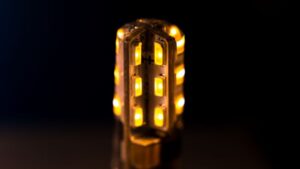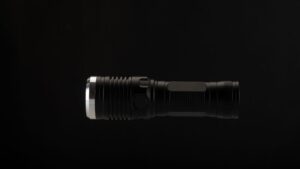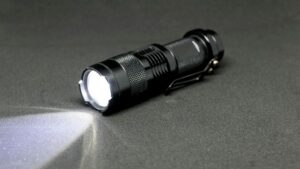If your car sputters to a halt on the shoulder of a busy motorway, you have to get out, grab the cumbersome warning triangles, and walk 50 meters back into the flow of oncoming traffic, all to signal your distress. It’s a risky, nerve-wracking procedure that has been the standard for decades. But what if there was a better, safer way?
There is the V16 emergency beacon, a small but powerful device set to completely change roadside safety in Spain. As we approach the mandatory January 1, 2026 deadline, the debate of “V16 beacon vs. warning triangle” is over. It’s time to understand why this change is happening and what it means for every driver on the road.
![]()
What Are V16 Emergency Beacons?
The V16 beacon is a compact, battery-powered device that you can store in your glove compartment. In an emergency, you don’t even need to unbuckle your seatbelt. You simply roll down your window, place the magnetic beacon on your car’s roof, and press a button.
Instantly, it emits a powerful, 360-degree flashing amber light that can be seen from over a kilometer away. But that’s not all. The true innovation lies in connectivity.
Starting in 2026, all new V16 beacons must be “connected.” This means they have built-in GPS that automatically communicates your exact location to the DGT 3.0 platform—Spain’s central traffic management system. This alerts other connected vehicles of a hazard ahead and can significantly speed up the response time of emergency services.
What Are Traditional Warning Triangles?
For years, those two reflective red triangles have been a mandatory part of every car’s emergency kit. Their job is simple: to be a passive, reflective signal to other drivers that a stationary vehicle is ahead.
Under Spanish law, if you break down, you’re required to place one triangle 50 meters behind your car (and another 50 meters in front if it’s a two-way street). Make sure it’s visible from at least 100 meters away.
While the intention is good, the reality is fraught with danger. The process involves:
- Exiting your vehicle onto a potentially high-speed road.
- Walking into oncoming traffic to place the triangle, often in poor visibility or bad weather.
- Leaving yourself vulnerable, a risk highlighted by tragic statistics on roadside accidents involving pedestrians.
These limitations and safety concerns are the primary drivers behind the regulatory shift. The simple act of signaling for help shouldn’t put you in more danger.
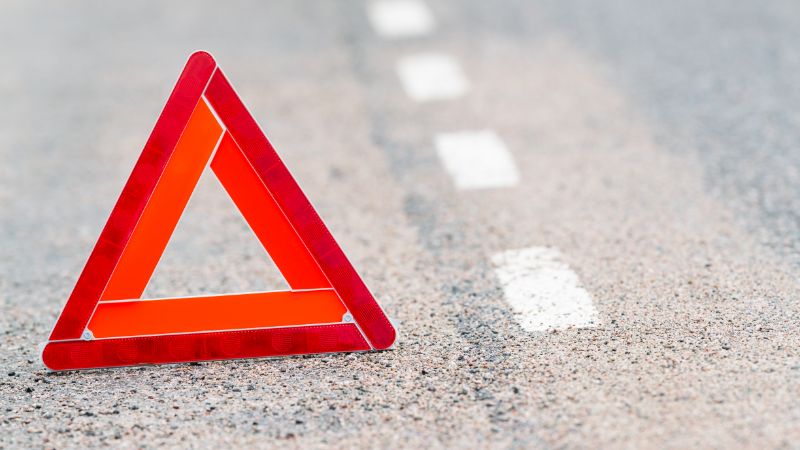
Understanding the Regulatory Landscape
The transition from triangles to beacons isn’t happening overnight. The DGT has laid out a clear timeline:
- The Idea (2015-2018): The concept was born from a desire to eliminate roadside fatalities, with inventor Jorge Torre leading the charge.
- The Transition Period (Now until Dec 31, 2025): Currently, you can use either two approved warning triangles or a valid V16 beacon. This gives drivers time to adapt.
- The Mandatory Deadline (Jan 1, 2026): From this date forward, the only legal way to signal a roadside breakdown will be with a connected V16 beacon. Warning triangles will no longer be valid, and failing to have a connected beacon could result in a fine of up to €200.
This decisive move by Spain is being watched closely by other European countries, positioning the nation as a leader in innovative road safety technology.
V16 Beacon vs. Warning Triangle: Feature Comparison
| Feature | V16 Emergency Beacon | Warning Triangle |
| Personal Safety | Zero exposure to traffic. Activated and placed from inside the vehicle by placing it on the roof. | High risk. Requires getting out of the car and walking 50-100m along a live road to place it. |
| Visibility | Active & High-Intensity. Emits a 360° flashing amber LED light. Visible from over 1 kilometer away, day or night, and in all weather conditions. | Passive & Low-Visibility. Relies on reflecting other cars’ headlights. Ineffective in daylight, rain, or fog. Easily missed. |
| Effectiveness | High. The dynamic flashing pattern is specifically designed to grab the attention of other drivers immediately. | Low. As a static object, it can be easily overlooked by inattentive drivers or in poor visibility conditions. |
| Deployment Speed | Very Fast (under 30 seconds). Stored in the glove compartment for quick access. Simple one-step magnetic placement. | Slow (several minutes). Involves finding, assembling, and walking a significant distance to place the triangle. |
| Ease of Use | Extremely Easy. Can be deployed by anyone, including those with mobility issues, without leaving the vehicle. | Difficult & Stressful. Requires physical effort and assembly in a high-stress, dangerous environment. |
| Connectivity | Connected. Automatically sends an anonymous alert with your GPS location to the DGT 3.0 platform. | Not Connected. A “dumb” object that cannot communicate its position or call for help. |
| Smart Features | Yes. Instantly alerts emergency services and warns other drivers through navigation apps (Waze, Google Maps). | None. It only serves as a visual marker for drivers who are already close. |
The Undeniable Advantages of Making the Switch to a V16 Beacon
The head-to-head comparison tells a compelling story, but let’s distill it down into the core benefits you gain by placing a V16 beacon in your glove compartment. This isn’t just about complying with a new law; it’s about fundamentally upgrading your personal safety.
1. Your Safety Comes First
The most critical advantage is drastically reducing your personal risk. By allowing you to signal for help without ever stepping foot onto a live roadway, the V16 beacon eliminates the primary cause of roadside fatalities. It protects you, your passengers, and your family from the danger of oncoming traffic.
2. Superior Visibility, Superior Safety
An active, flashing light visible from over a kilometer away is simply more effective than a passive reflector. It cuts through fog, rain, and darkness, giving other drivers significantly more time to react. This increased warning time is crucial for preventing secondary collisions.
3. Speed and Simplicity in a Stressful Situation
In the panic and confusion of a breakdown, fumbling with triangle assemblies is the last thing you need. The V16 beacon’s design prioritizes speed and ease of use. It’s a single, simple action that takes seconds, allowing you to focus on getting to safety and contacting help.
4. Automatic SOS for Faster Help
The connected V16 is your silent guardian. It automatically calls for help the moment it’s activated, sending your precise GPS location to the DGT. This means help is dispatched faster, even if you are unable to make a call yourself. For solo travelers or in cases of medical emergency, this feature can be a literal lifesaver.
5. Future-Proofing Your Vehicle
The January 1, 2026 deadline is not far away. By adopting a connected V16 beacon now, you are not only gaining immediate safety benefits but also ensuring your vehicle is compliant for the years to come. It’s a small investment that provides both immediate peace of mind and long-term regulatory compliance.
![]()
How to Choose the Right V16 Emergency Beacon in 2025
As the 2026 deadline approaches, the market is filling with options. But not all beacons are created equal. Here’s what you absolutely must look for to ensure you are buying a compliant, effective, and legal device.
1. Check for DGT Approval and Certification
This is non-negotiable. A compliant beacon must be officially approved by the Dirección General de Tráfico. Look for a DGT approval code printed clearly on the device itself. This code will start with LCOE, IDIADA, or TUV, followed by a series of numbers. If it doesn’t have this code, it is not a legal V16 beacon.
2. Insist on a “Connected” Model (Señal V16 Conectada)
While non-connected beacons are still legal to use until the end of 2025, buying one now is a poor investment. From 2026, only connected models will be valid. Ensure the packaging and product description explicitly state it is a “Señal V16 Conectada.” These models include the built-in GPS and a pre-paid data plan for at least 12 years, as required by law.
3. Verify the Technical Specifications
A compliant beacon must meet several key performance standards:
- IP Rating: Look for at least an IP54 rating, which ensures it is resistant to dust and water splashes. A higher rating (like IP65) is even better.
- Light: It must have a 360° horizontal and 8° vertical amber/yellow flashing light.
- Battery: The device must guarantee at least 18 months of shelf life for its battery. Many quality models use a standard 9V battery that is easily replaceable.
- Stability: It should be stable on a flat surface and have a powerful magnet to ensure it stays on your vehicle’s roof, even in windy conditions.
4. Ready to Upgrade Your Safety?
Don’t wait until the last minute. Explore our DGT-approved, connected V16 emergency beacons today and drive with the peace of mind that you’re prepared for anything.
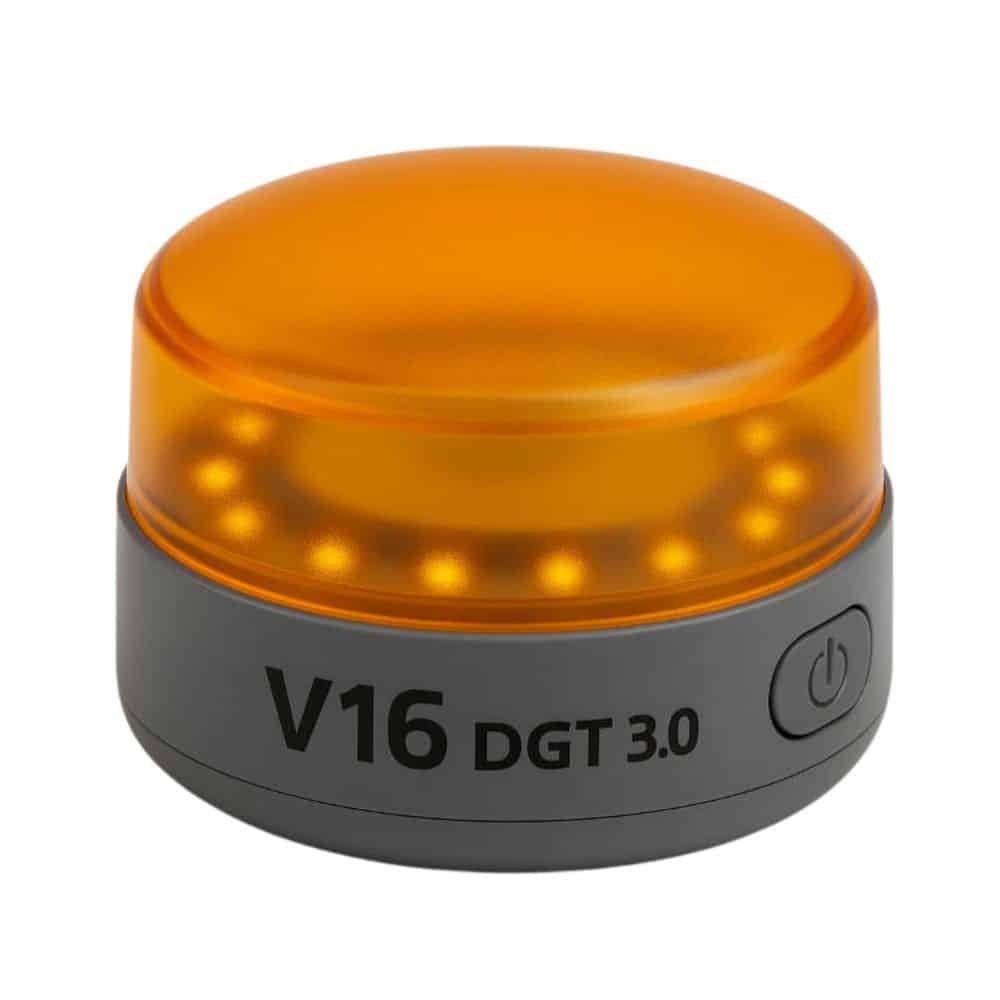 |
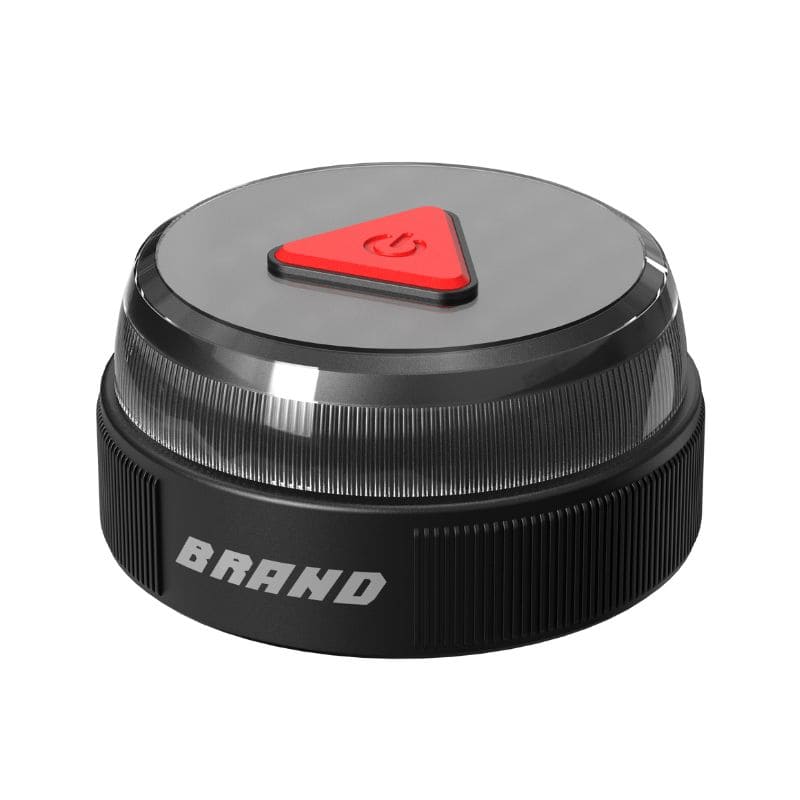 |
|
V16 DGT 3.0 Revolutionary Vehicle Emergency Light | Wholesale & OEM/ODM |
How to Use Your V16 Beacon Correctly
One of the biggest advantages of the V16 beacon is its simplicity. While your specific model may have unique features, the core process is universal and designed to be effortless in a stressful situation.
Step-by-Step Deployment:
- Stay in Your Vehicle: Your safety is paramount. Remain in your car with your seatbelt fastened.
- Locate the Beacon: It should be stored in your glove compartment or a door pocket for easy access—never in the boot!
- Activate the Device: Press the power button. On most models, this is a single, large, easy-to-find button. You should see the amber light begin to flash immediately.
- Place it on Your Roof: Roll down your window and extend your arm to place the magnetic base of the beacon on the highest point of your vehicle’s roof. This ensures 360-degree visibility.
- Engage Hazard Lights: While the V16 is your primary signal, it’s still good practice to turn on your vehicle’s built-in hazard lights as a secondary warning.
That’s it. In less than 30 seconds, you have created a highly visible, long-range warning signal without ever stepping into danger. If you have a connected beacon, the device will automatically handle communicating your location to the DGT 3.0 platform.
Maintenance is Minimal but Important:
- Check the Battery: Every six months, press the test button (if available) or activate the beacon for a few seconds to ensure the battery is working.
- Keep it Clean: Wipe down the lens occasionally to ensure maximum light output.
- Read the Manual: Be familiar with any specific features of your device, such as how to change the batteries or check its connectivity status.
Frequently Asked Questions (FAQ)
Q: Can I still use my warning triangles until 2026?
A: Yes. Until December 31, 2025, you can legally use either two compliant warning triangles or one approved V16 beacon. However, for safety reasons, switching to a beacon now is highly recommended.
Q: What happens if I don’t have a connected V16 beacon on January 1, 2026?
A: You will be in breach of Spanish traffic law. If you have a breakdown and cannot signal it with a connected V16 beacon, you could face a fine of up to €200.
Q: Will my current non-connected V16 beacon be useless in 2026?
A: Yes. From January 1, 2026, only connected V16 beacons that can communicate with the DGT 3.0 platform will be legal. Your non-connected beacon will no longer be a valid emergency signaling device.
Q: How does the connected V16 send data? Do I need a subscription?
A: The beacon uses its own built-in SIM card and data connection. The cost of this connectivity for at least 12 years is included in the purchase price of the device. There are no monthly fees or subscriptions for you to manage.
Q: How do I know for sure if a beacon is properly certified?
A: Look for the DGT approval code (starting with LCOE, IDIADA, or TUV) printed directly on the device’s housing. If you’re unsure, check the DGT’s official website for a list of approved models.
Q: Do I need one or two beacons?
A: You only need one V16 beacon. Its 360-degree light covers all angles, replacing the need for two separate triangles.


